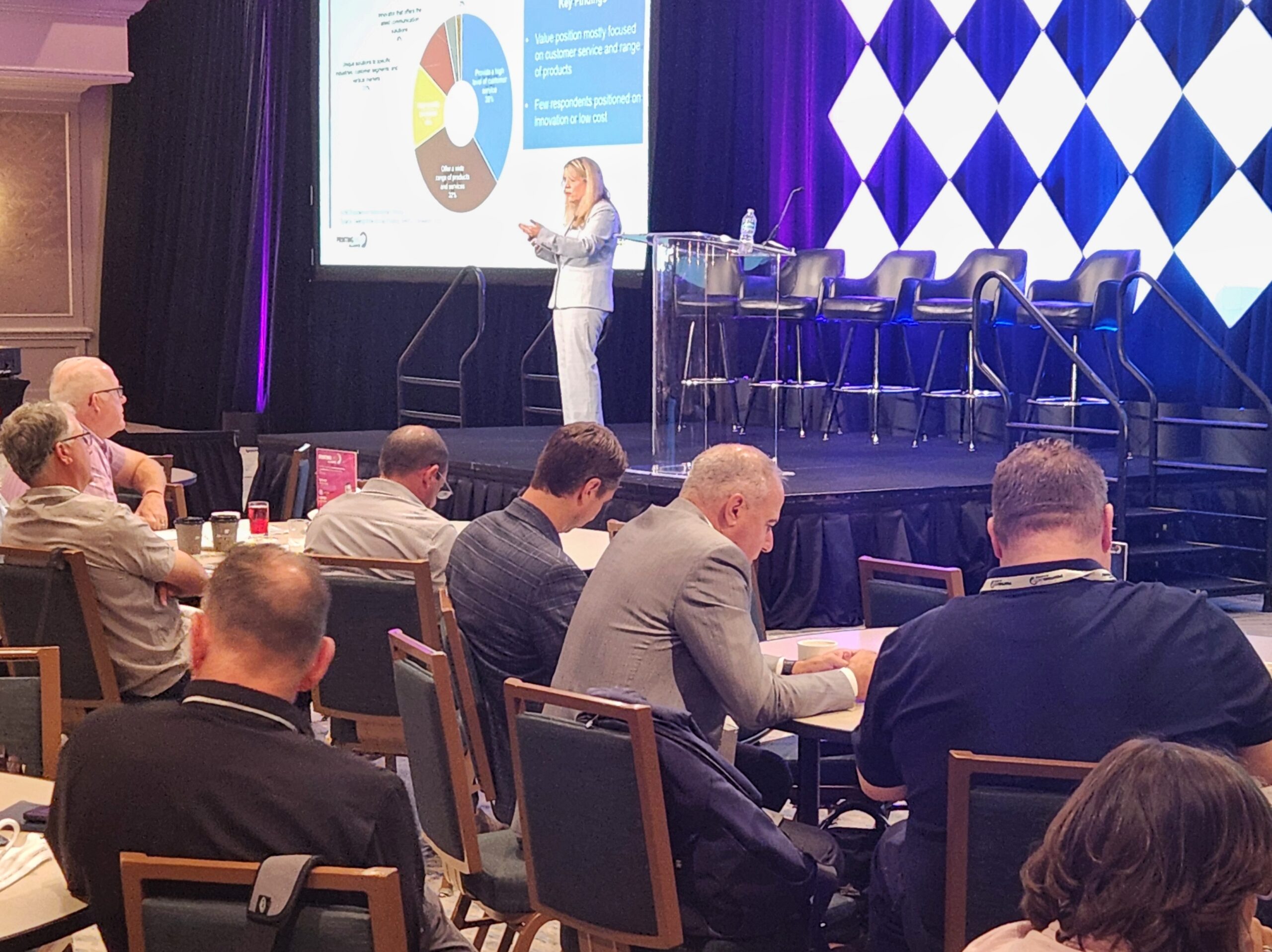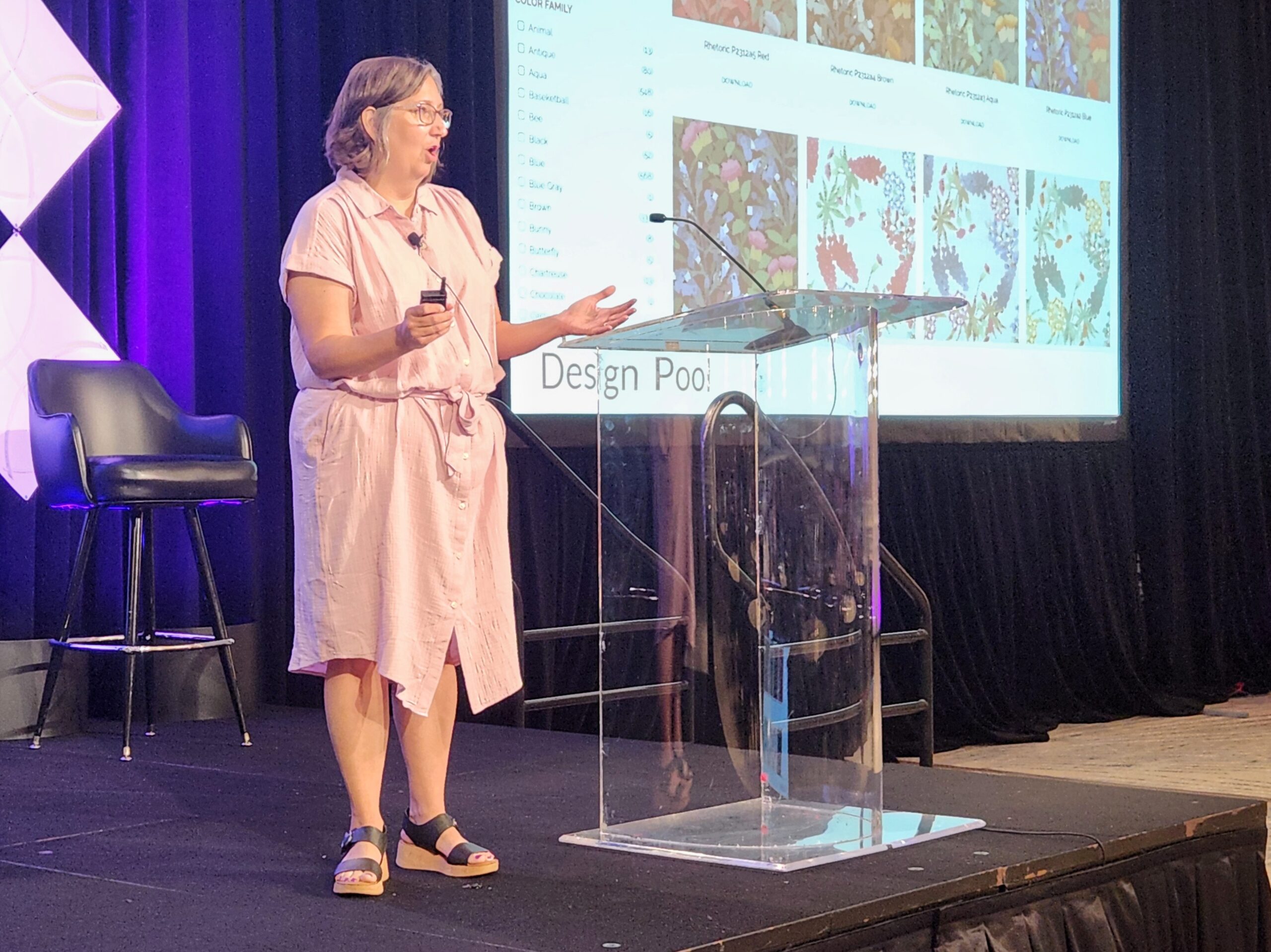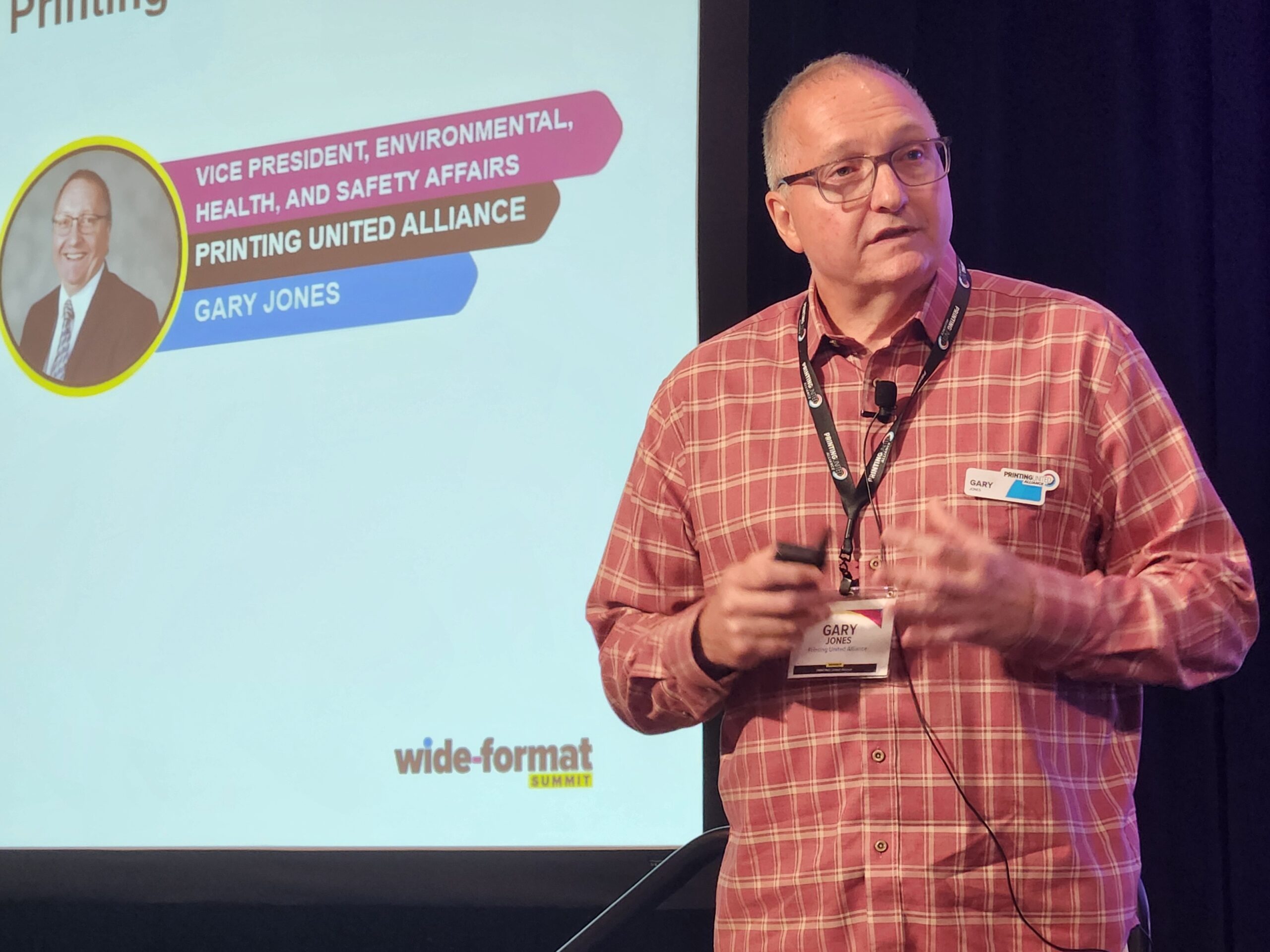10 Highlights from the 2024 Wide-Format Summit
Dan Marx & Gabby Houck
The 2024 Wide-format Summit — now in its 4th year — was an event packed with educational sessions, vendor-driven case studies, and one-on-one meetings between vendors and attendees. The annual event is a free, all-inclusive experience for qualified attendees — senior managers and business executives seeking to understand how current and future wide-format printing technology, software and other solutions will impact their business and investment decisions. It offers strategic-level insights into what printing industry leaders can do to improve and optimize their businesses.
Here are a few highlights from this year’s event. If you like what you see, sign up to be considered for a future Wide-format Summit at wideformatsummit.com.
1. Key Dynamics Shaping the Segment
Marco Boer, vice president of IT Strategies, discussed key factors driving industry growth, such as ERP software, high-touch programs, and specialty applications. He explained that while he’s confident about sustainable long-term growth in the wide-format segment, print service providers need to get on board with these concepts to thrive. ERP software in particular, he said, can help PSPs manage their inventory of substrates and inks, process workflows, and address issues. ERP software, he added, “can make or break us.”
With tools like ERP and high-touch programs, companies have the opportunity to become a far more sophisticated business. “And that’s going to be critical to a company’s ability to survive and thrive in this industry,” Boer said.
2. Business Implications of New Technologies
In one panel discussion, Denise Gustavson, editorial director for PRINTING United Alliance, was joined by David Dey, executive vice president of Color Dynamics; Nick Green, director of wide-format for AlphaGraphics; Craig Furst, CEO of A3 Visual; and Dilo Wijesuriya, president and CEO at ARC Document Solutions; to discuss essential considerations for those investing in new wide-format printing equipment.
The panel included questions from keynote sponsors Agfa, Canon, FUJIFULM, and HP looking into how the panelists are addressing current challenges such as cost inflation and labor shortages; what they are doing to stay competitive; the biggest challenges they are facing today; whether or not they’re implementing automation either in software or hardware; if sustainable initiatives have earned them new customers; and where they’re investing or allocating resources/time spent in these current economic conditions. It was a thoughtful look at where the industry is today.
3. Sustainability Drivers and Opportunities
Dan Marx, content director for Wide-format Impressions, was joined by a panel comprised of Gary Jones, vice president of environmental, health, and safety affairs for PRINTING United Alliance; Leslee Barker, director of graphic center operations at Miller Zell; and Brian Hite, co-founder of Image Options; to discuss the latest driving forces in sustainability, including regulatory initiatives, customer requirements, and business benefits.
The panelists exposed company-specific details on topics including the benefits of third-party sustainability programs like the Sustainable Green Printing Partnership (SGP), the increase of government involvement in sustainability regulations, how sustainability initiatives can also reduce operating costs, and whether they believe their companies have a moral obligation to keep the planet in mind during daily operations.
4. Analyzing the Wide-Format Segment
Lisa Cross, principal analyst at NAPCO Research, presented a fast-moving, data-supported session, “Maximizing Wide-Format Sales: Integrating SWOT Analysis with Buyer Insights.” Using data from a recent survey exploring how wide-format print is sold, she framed the discussion around the SWOT (strengths, weaknesses, opportunities, and threats).
Among the strengths the survey identified were the range of product offerings in the wide-format segment, as well as the efficacy of wide-format applications as marketing and communication tools. Several of the weaknesses identified related to sales efforts. Cross noted many companies feel challenged when engaging with prospects, and in understanding what motivates them to buy.
5. Big Answers to Wide-format Questions
When Wide-format Summit attendees register for the event, they are asked to provide “burning questions” they hope to have answered during the Summit. Boer provided answers to 10 questions he found to be particularly prescient.
Among questions addressed was the effect of AI on the industry, the current state of the digital signage opportunity, and whether dye-sublimation continues to be a growing opportunity. A handful of questions explored current challenges faced by wide-format producers: the need for automation, reducing costs, and staying profitable. For companies asking: what equipment they should buy, Boer proposed his own questions for them. What does the business need today? What will the business look like two or three years from now? He urged attendees to choose equipment carefully, illustrating the value of the vendor relationships. Service and product support, he said, matter greatly.
6. Wide-Format Textiles and Digital Interface
In a textile-focused session, Kerry Maguire King, formerly of Spoonflower and Shutterfly, who is now seeking a PhD in textile technology management, provided an overview of digital printing technologies, and described how e-commerce approaches are changing models and opening opportunities. Her presentation explored textile printing for décor, soft signage, and wallpaper applications, and addressed decorative wallpaper applications.
Maguire King provided keen views into workflows for high-production and micro-production approaches, highlighting the necessity of digital solutions for order creation and job management. She further offered insight into how project visualization — essentially selling a product that does not yet exist — is key to compelling commercial customers and consumers to click “purchase.” Clearly, that critical step is essential to the profitability of new, online sales approaches.
7. Exploring The Opportunities of AI
Marx discussed one of the industry’s hottest topics: artificial intelligence. Throughout his presentation, he emphasized that AI isn’t a magic box filled with serendipitous results, but a tool to be used (and used correctly). If wide-format printers are going to utilize AI in their everyday business practices, they must put in the work to see how it fits, and understand how it will improve processes.
To put into perspective how wide-format producers can utilize AI, Marx was joined on stage by Adriane Harrison, vice president of human relations consulting for PRINTING United Alliance. She explained ways AI can help tackle HR-oriented aspects of business, and described its limitations and potential pitfalls. The session further included brief discussions with Dan Thompson of Italic Press, and Steve Cussons of miniGiants Inc., who both outlined their nascent efforts to realize the production and management benefits of AI.
8. Managing Employee Impairment
Harrison returned to the presentation stage to describe the challenges of managing impaired employees, including those with abuse or addiction issues, or those struggling with, for instance, cancer treatments or other significant life events, and highlighted how to spot on-the-job impairment. She urged all attendees to address impaired employees humanely and with dignity, while protecting their own companies from potential lawsuits.
9. The Quest for Sustainability
Jones also returned to the stage to address sustainability in today’s industry, and shared that he believes it’s “here to stay.” To keep up with regulations and new initiatives, Jones said, it is imperative that businesses create and have a sustainability plan in place. “Start small, build momentum, and engage your workforce. [It is] critical to your success,” he said.
As increasingly more companies claim to be sustainable, Jones urged businesses to have in place methods for measuring or documenting their sustainability practices and proving their claims. This, he said, will help them reach environmental commitments and gain client trust.
10. Strategies for Doing “Must Do’s”
Gustavson moderated a panel of imaging professionals — Chip Basse of Albert Basse Associates; Dean DeMarco of Middlestreet Graphics and Displays; and Brian Hite of Image Options — to discuss “must do” topics featured in PRINTING United Alliance’s recent State of the Industry Report, sponsored by Canon U.S.A.
One topic was change management. DeMarco said managers should expect resistance to change, and should address that resistance through effective communication and by gaining feedback from those who will be subject to changes implemented. Hite reinforced DeMarco’s notion, stating that feedback and communication are essential. He urged not sudden, global change, but gradual, incremental change — taking a few steps at a time. In managing change at his company, Basse said, effective training, member involvement, and utilizing internal “change agents” are essential.











